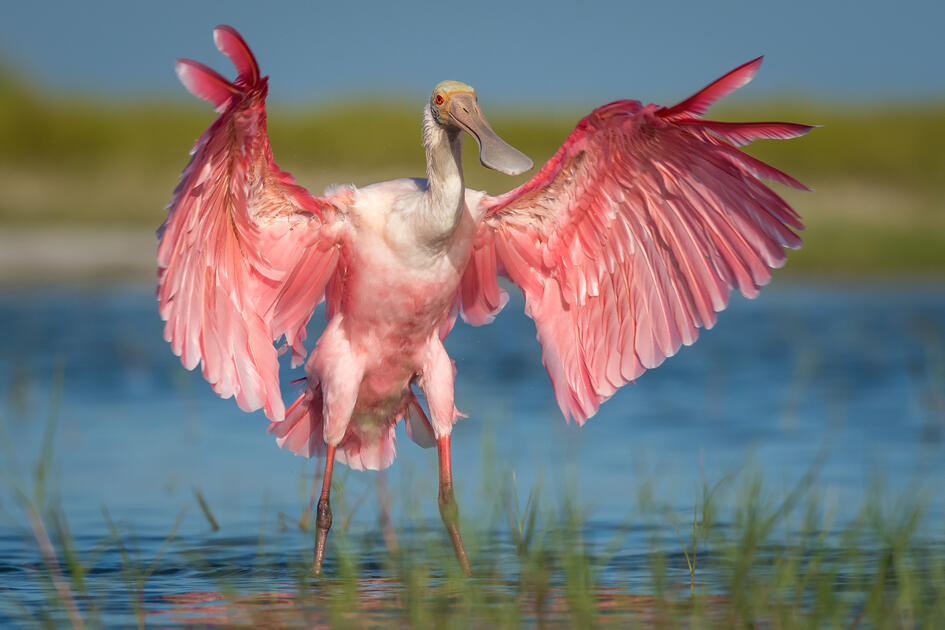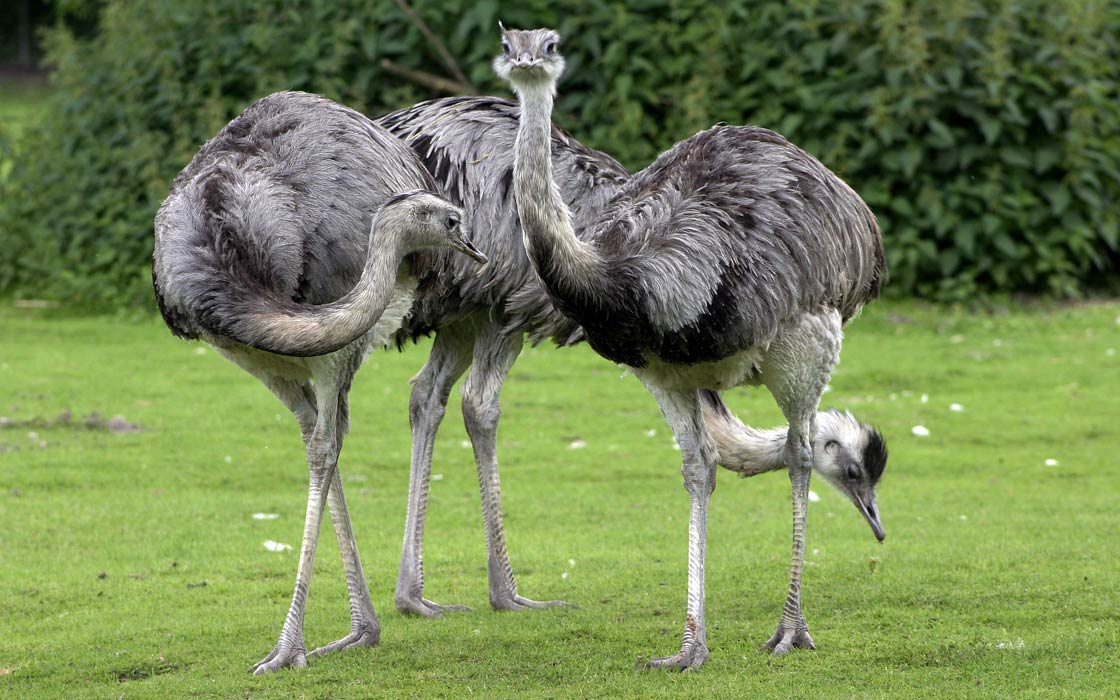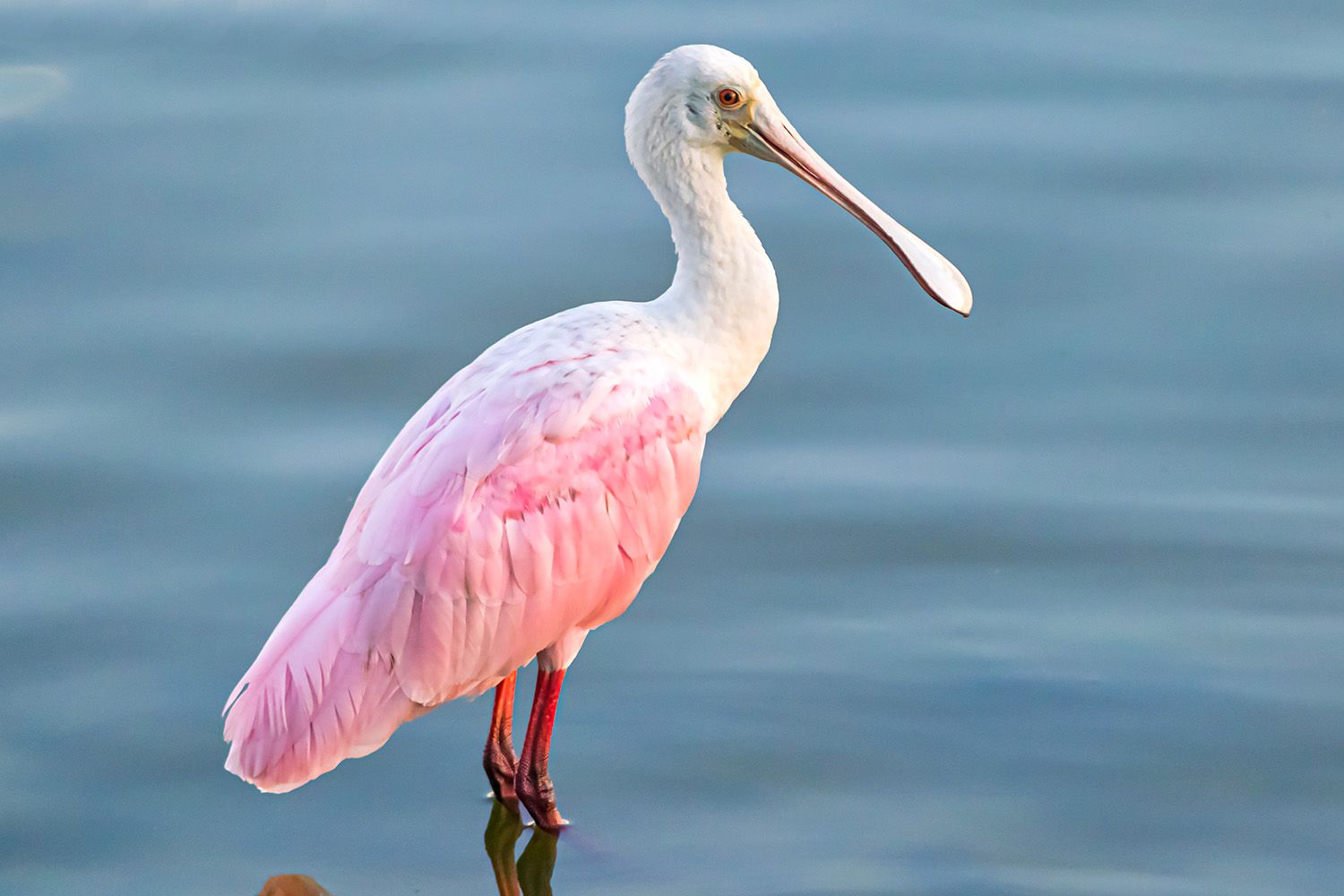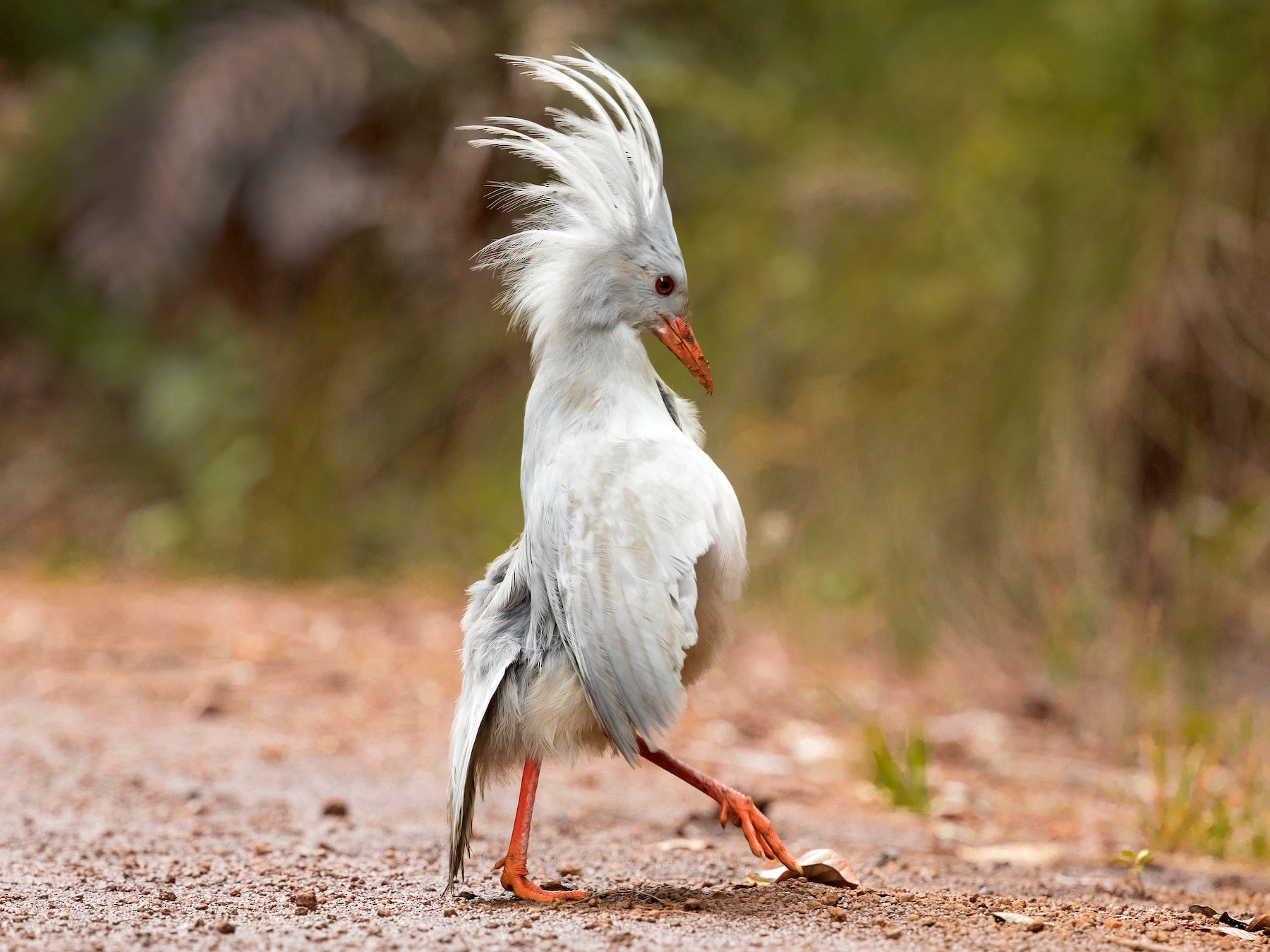Tropical birds are a diverse group of birds that are native to the tropics, which are the parts of the earth that form a band around the equator bordered by the Tropic of Cancer in the north and the Tropic of Capricorn in the south.
These birds come in a wide variety of colors and sizes and are found in tropical rainforests, islands, and other habitats within the tropics. Some of these birds are brilliantly colored and easily kept as pets, while others are drab and impossible to domesticate.
You are reading: 10 Types Of Tropical Birds
In this article, we will explore ten different types of tropical birds, including their characteristics, habitats, and behaviors.

10 Types Of Tropical Birds
Greater Rhea

The Greater Rhea is a large, flightless bird that is native to southeastern South America, including Brazil, Bolivia, Uruguay, Paraguay, and Argentina. Here are some characteristics of the Greater Rhea:
– The Greater Rhea is one of the largest birds on the planet, measuring up to 5.5 feet tall and weighing up to 66 pounds.
– They have long legs and a long neck, and their head, neck, and thighs are covered with feathers, but they have no tail feathers.
– Their plumage is mostly gray and brown with white underparts, and they have unusually long wings for flightless birds, which they use like an airplane rudder to help them dodge predators and for balance while running.
– Greater Rheas are polygamous, and males have many different mates. Females lay their eggs in a ground nest of the male’s design, and several females deposit their eggs in the same nest, which may hold 50 eggs or more.
– The male Rhea incubates the eggs of all its mates for six weeks and cares for the newly hatched young. They aggressively guard their young during this period and will charge any animal that approaches too closely.
– Greater Rheas are opportunistic eaters, enjoying plants, fruits, and seeds, but also eating insects, lizards, birds, and other small game. They have a taste for agricultural crops, which earns them the ire of many South American farmers.
Despite their large size, Greater Rheas are fascinating birds that have adapted to life in the grasslands and semiarid scrublands of South America.
Hamerkop
The Hamerkop is a medium-sized waterbird that is native to sub-Saharan Africa and Madagascar. Here are some characteristics of the Hamerkop:
– The Hamerkop stands about 56 cm (22 in) high and weighs around 470 g (17 oz).
– Its plumage is a drab brown with purple iridescence on the back, and the tail is faintly barred with darker brown. The sexes are alike, and fledglings resemble adults.
– The Hamerkop has a long, slightly hooked bill that is 80 to 85 mm (3.1–3.3 in) long. The neck and legs are proportionately shorter than those of similar-looking Pelecaniformes, and the bare parts of the legs are black. The legs are feathered only to the upper part of the tibia, and the Hamerkop has partially webbed feet. The middle toe is comb-like (pectinated) like a heron’s.
– The Hamerkop is mostly silent when alone, but is fairly vocal when in pairs or in groups. The only call it usually makes when alone is a flight-call, a shrill sound.
– The Hamerkop is a carnivore that feeds on amphibians and fish. It is diurnal and has a lifespan of 10-20 years.
– The Hamerkop is known for its distinctive head shape, which resembles a hammer thanks to a pointed wedge of feathers on the back of the head. It also builds huge nests, sometimes more than 1.5 m (4 ft 11 in) across, and strong enough to support the weight of a human.
The Hamerkop is a fascinating bird that has adapted to life in the wetlands and savannas of sub-Saharan Africa and Madagascar.
Roseate Spoonbill

The Roseate Spoonbill is a gregarious wading bird that belongs to the ibis and spoonbill family, Threskiornithidae. It is a resident breeder in both South and North America, and is known for its pink color, which is diet-derived and consists of the carotenoid. Here are some characteristics of the Roseate Spoonbill:
– The Roseate Spoonbill is a medium-sized waterbird with a football-shaped body and long legs. It stands about 32 inches (81 cm) tall and has an average wingspan of 50 inches (127 cm).
– The plumage of the Roseate Spoonbill is pale pink with brighter pink shoulders and rump. It has a white neck and a partially feathered, yellowish-green head from which protrudes a long bill that is flattened into a spoon at the end.
– The Roseate Spoonbill feeds in shallow fresh or coastal waters by swinging its bill from side to side as it steadily walks through the water, often in groups. The spoon-shaped bill allows it to sift easily through mud, and it feeds on small invertebrates, fish, and crustaceans.
– Roseate Spoonbills must compete for food with other freshwater birds, such as snowy egrets, great egrets, tricolored herons, and American white pelicans. They are often trailed by egrets when foraging in a commensal “beater-follower” relationship, as the spoonbill’s disturbance of the sediment makes prey more available to the egret (follower).
– The Roseate Spoonbill nests in shrubs or trees, often in large colonies with other wading birds. The male uses gifts of nesting material to attract the female, and once mated, the pair remains monogamous. Both male and female take turns sitting on the eggs and feeding the young.
– Like many other bird species with beautiful plumage, Roseate Spoonbills were nearly hunted to extinction during the 1800s. Their striking pink feathers were popular on women’s hats, and hunters from all over the United States competed for spoonbill plumes. By the 1930s, the population dropped to a low of 30 to 40 breeding pairs nesting in a few small colonies on the keys of Florida Bay. The population has since recovered, and the Roseate Spoonbill is now considered a species of least concern.
African Pygmy Goose
The African Pygmy Goose is a small perching duck that is native to sub-Saharan Africa and Madagascar. Here are some characteristics of the African Pygmy Goose:
– The African Pygmy Goose is the smallest of Africa’s waterfowl and one of the smallest in the world, measuring only about 8 inches (20 cm) in length and weighing around 5 ounces (140 g).
– Despite its name, the African Pygmy Goose is not a goose at all, but rather a type of perching duck. It has a stubby bill and is known for its colorful plumage, which includes rufous underparts, a dark back, white on the face, and white on the wing in flight.
– The African Pygmy Goose is known to be nomadic and can be found across a wide area of sub-Saharan Africa and Madagascar. It lives in habitats of slow flowing or stagnant water with a cover of water lilies, including inland wetlands, open swamps, farm dens, river pools, and estuaries.
– The African Pygmy Goose feeds mainly on the seeds of water lilies (Nymphaea spp.) but also on other floating seeds and small insects as well as other small invertebrates.
– The African Pygmy Goose was described by the French polymath Georges-Louis Leclerc, Comte de Buffon in his Histoire Naturelle des Oiseaux in 1785. The bird was also illustrated in a hand-coloured plate engraved by François-Nicolas Martinet in the Planches Enluminées D’Histoire Naturelle which was produced under the supervision of Edme-Louis Daubenton to accompany Buffon’s text.
– The African Pygmy Goose is not considered to be threatened, and its population is stable. It is sometimes kept in captivity and can be seen in zoos and aviaries around the world, including the San Diego Zoo and the Denver Zoo.
Harpy Eagle
The Harpy Eagle is a neotropical species of eagle that is native to Central and South America. It is the largest and most powerful raptor found throughout its range, and among the largest extant species of eagles in the world. Here are some characteristics of the Harpy Eagle:
– The Harpy Eagle is a large bird of prey that can grow up to 3.5 feet (1 meter) in length and weigh up to 20 pounds (9 kg). It has a wingspan of up to 7 feet (2.1 meters).
– The Harpy Eagle is known for its striking appearance, with a black and white head, a gray body, and a distinctive crest of feathers on its head that it can raise or lower depending on its mood.
– Harpy Eagles are at the top of the food chain and have no natural predators. They prey on tree-dwelling mammals including sloths, monkeys, and opossums; large birds such as macaws and curassows; and reptiles like iguanas and snakes.
– The Harpy Eagle has the largest talons of any living eagle and has been recorded as carrying prey weighing up to roughly half of their own body weight. This allows them to snatch from tree branches a live sloth and other large prey items.
– Harpy Eagles are among the most powerful raptors in the world. Unlike the Andean Condor and many other raptors, Harpy Eagles are not built for true soaring. They have relatively short wings and long tails that act like a rudder on a boat to steer through dense vegetation. Rather than flying long distances at one time, Harpy Eagles travel relatively slowly, moving from tree to tree.
– The Harpy Eagle is the national bird of Panama and is depicted on the coat of arms of Panama. It is also the emblem of the Colombian Air Force and the Ecuadorian symbol of biodiversity.
Kagu

The Kagu, also known as the cagou, is a flightless bird that is endemic to the dense mountain forests of New Caledonia. Here are some interesting facts about the Kagu:
– The Kagu is the only surviving member of the genus Rhynochetos and the family Rhynochetidae.
– The name Kagu is derived from the Melanesian names for the species. The species is variously known as the kavu or kagou in the Kanak languages, and as the cagou in French (also used as an alternative spelling in English).
– The Kagu is a ground-living bird, 55 cm (21+1⁄2 in) in length. The weight can vary considerably by individual and by season, ranging from 700 to 1,100 g (25–39 oz).
– Its plumage is unusually bright for a bird of the forest floor; ash-grey and white coloured. There is little sexual dimorphism beyond a difference in the amount of barring in the primary feathers. It possesses powder down which helps keep it dry and insulates it in the extremes of New Caledonia’s tropical climate.
– Kagu are territorial, maintaining year-round territories of around 10–28 hectares (25–69 acres). They have a clan-based social organization, with families composed of one breeding female and one to three breeding males. Male offspring also help to defend their family’s territory.
– The Kagu is known for its distinctive calls, which include a series of whistles, screams, and croaks. These calls are used to communicate with other Kagus and to defend their territory.
– The Kagu is an omnivore, feeding on a variety of invertebrates, small vertebrates, and plant material. It is known to eat snails, insects, spiders, lizards, and fruit.
– The Kagu is considered to be a vulnerable species due to habitat loss and predation by introduced mammals such as rats and feral cats. Conservation efforts are underway to protect the remaining Kagu populations, including captive breeding programs and habitat restoration projects.
Papuan Lorikeet
The Papuan Lorikeet, also known as the West Papuan Lorikeet, is a species of parrot that is found in New Guinea. Here are some interesting facts about the Papuan Lorikeet:
– The Papuan Lorikeet is a large, long-tailed lorikeet that measures between 36-42 cm (14-16.5 in) in length and weighs between 74-113 g (2.6-4 oz).
– The plumage of the Papuan Lorikeet is distinctive, with a red head and chest, green wings, a dark patch on the belly, and a green base to the tail. Some individuals have blue feathers on the alula and light green upperwings that are distinctly paler than the back.
– The Papuan Lorikeet is found in mid and upper montane forests in New Guinea, including the mountains of Vogelkop Peninsular in Indonesia. They are known to be nomadic, moving in search of food sources.
– The Papuan Lorikeet feeds on nectar, pollen, and fruit, and has a specialized tongue that allows it to extract nectar from flowers. They are also known to feed on insects and their larvae.
– The Papuan Lorikeet is known for its distinctive calls, which include loud, slurred screeches in an upward inflection when in flight, and nasal, long calls when feeding or at rest.
– The Papuan Lorikeet is not considered to be threatened, and its population is stable. However, like many other parrot species, it is vulnerable to habitat loss and fragmentation due to deforestation and human development. Conservation efforts are underway to protect the remaining Papuan Lorikeet populations and their habitats.
Parrots (including Eclectus parrots, Blue and Gold Macaw, Mealy Parrot)
Parrots are a diverse group of birds that are known for their colorful plumage, intelligence, and ability to mimic human speech. Here are some types of parrots, including Eclectus parrots, Blue and Gold Macaw, and Mealy Parrot:
– Eclectus Parrots: These medium-sized parrots are native to Northeast Australia, the Solomon Islands, and New Guinea. They are known for their striking sexual dimorphism, with males having bright green plumage and females having red and blue feathers. Eclectus parrots are unique in their dietary and social needs.
– Blue and Gold Macaw: These large, colorful parrots are native to South America and are known for their blue and yellow plumage. They are intelligent and social birds that require a lot of attention and stimulation.
– Mealy Parrot: These large parrots are native to Central and South America and are known for their green and blue plumage. They are intelligent and social birds that require a lot of attention and stimulation.
There are many more types of parrots than just the three listed here, including Amazons, African Greys, Cockatoos, and Conures. Parrots are popular pets due to their intelligence, beauty, and ability to form strong bonds with their owners. However, they require a lot of care and attention, and potential owners should do their research before bringing a parrot into their home.
Hornbills (including Rhinoceros Hornbill)
Read more : 8 Types Of Blue Birds In Washington State To Watch
Hornbills are a family of tropical and subtropical birds that are known for their large, curved bills and distinctive casques. One species of hornbill is the Rhinoceros Hornbill, which is found in Southeast Asia. Here are some interesting facts about the Rhinoceros Hornbill:
– The Rhinoceros Hornbill is a large species of forest hornbill that can live for up to 35 years in captivity. It is found in lowland and montane, tropical and subtropical climates and in mountain rain forests up to 1,400 meters in Borneo, Sumatra, Java, the Malay Peninsula, Singapore, and southern Thailand.
– The Rhinoceros Hornbill is a large arboreal hornbill, 80 to 90 cm (31–35 in) long. The weight varies by sex, with males weighing around 2,465 to 2,960 g (87.0–104.4 oz) and the females 2,040 to 2,330 g (72–82 oz). The plumage is predominantly black, with white legs and vent and a white tail with a black band. The huge bill and casque are orange and red, the colour coming from preen oil rubbed on from the preen gland above the tail.
– The Rhinoceros Hornbill is known for its distinctive calls, which include a series of loud, honking sounds. These calls are used to communicate with other Rhinoceros Hornbills and to defend their territory.
– The Rhinoceros Hornbill is an omnivore, feeding on a variety of fruits, insects, and small animals. They are known to swallow small prey whole and regurgitate the indigestible parts, such as bones and fur, in pellets.
– The Rhinoceros Hornbill is classified as “Near Threatened” by the IUCN and faces many challenges in the wild, including habitat loss and hunting for its casque and feathers. Conservation efforts are underway to protect the remaining Rhinoceros Hornbill populations and their habitats.
Toucans (including the Toco Toucan)

Toucans are a group of tropical birds that are known for their large, colorful bills. One of the most well-known species of toucan is the Toco Toucan. Here are some interesting facts about the Toco Toucan:
– The Toco Toucan is the largest and probably the best-known species in the toucan family. It is found in central and eastern South America, including Brazil, Bolivia, Paraguay, and Argentina.
– The Toco Toucan has a distinctive appearance, with a mainly black body, a white throat, chest, and uppertail coverts, and red undertail coverts. Its most striking feature is its large, orange bill, which can be up to 7.5 inches (19 cm) long.
– Toco Toucans are non-forest birds and can be found in a wide range of semi-open habitats such as woodland, savanna, and other open habitats with scattered trees, plantations, forest edges, and even wooded gardens.
– Toco Toucans are omnivores, feeding on a variety of fruits, insects, and small animals. They use their large bills to reach fruit on branches that are too small to support their weight, and the bill’s serrated edges are useful for peeling fruit.
– The Toco Toucan is known for its distinctive calls, which include a series of loud, croaking sounds. These calls are used to communicate with other Toco Toucans and to defend their territory.
– The Toco Toucan is a popular bird in zoos and is often used as a commercial mascot. It is not considered to be threatened, and its population is stable.
Overall, Toucans are fascinating birds that are known for their unique appearance and behavior.
FAQS
1. What is a tropical bird?
A tropical bird is a bird species that is native to the tropics, which are the parts of the earth that form a band around the equator bordered by the Tropic of Cancer in the north and the Tropic of Capricorn in the south.
2. What are some types of tropical birds?
There are many types of tropical birds, including parrots, hornbills, toucans, and raptors like eagles, hawks, and vultures. Some specific examples include the Greater Rhea, Hamerkop, Roseate Spoonbill, African Pygmy Goose, Eclectus Parrot, Blue and Gold Macaw, Mealy Parrot, Rhinoceros Hornbill, Toco Toucan, and Kagu.
3. Are all tropical birds brightly colored?
No, not all tropical birds are brightly colored. While many tropical birds are known for their bright plumage, some are drab in coloration and difficult to spot in their natural habitats.
4. Can tropical birds be kept as pets?
Yes, some tropical birds can be kept as pets, including parrots like Eclectus Parrots and Macaws. However, potential owners should do their research before bringing a tropical bird into their home, as they require a lot of care and attention.
5. Are tropical birds endangered?
Some species of tropical birds are endangered due to habitat loss, hunting, and other factors. However, many species are not considered to be threatened and have stable populations. Conservation efforts are underway to protect endangered tropical bird species and their habitats.
Source: https://petstutorial.com
Category: Birds










